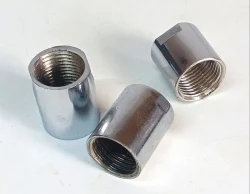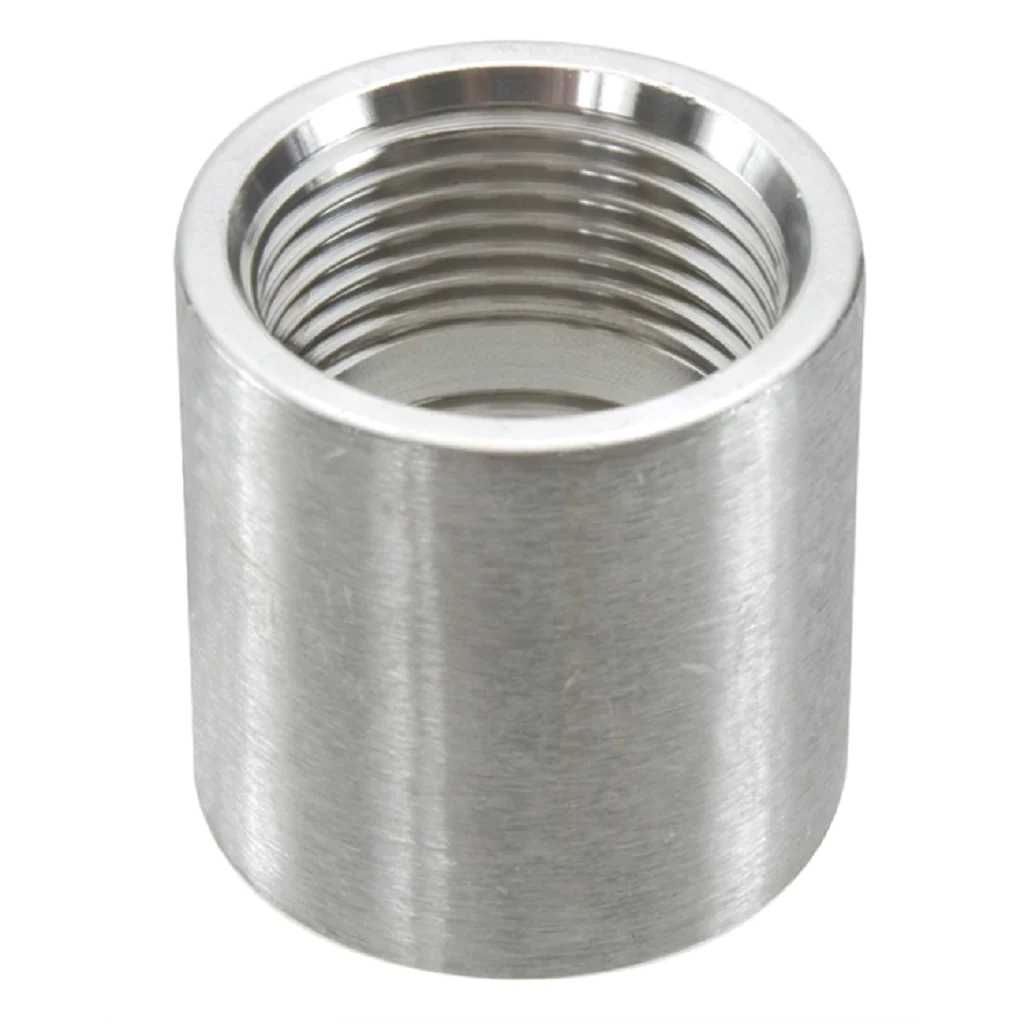Product Description
Product Description
| Product Name | Comlock couplings |
| Material | Stainless Steel 304/316 |
| Model No | Type D |
| Certificate | ISO9001 IATF16949 |
| OEM | Accept |
| Suitable Medium | Pipe line connect of water,oil,steam,gas,air,etc. |
| Color | silver |
| MOQ | 10 PC |
| Term of Payment | 30%TT Deposit, the balance is paid before shipping the goods |
| Package | Plastic Bags——-Paper Boxes——-Cartons——-Plywood Cases |
| Delivery Time | 15-30 Days According To Order QTY |
| Shipment Port | HangZhou, ZheJiang |
| Our Advantage |
Competitive price and good after-sale service Can do OEM products Print logo requested on Quantity first, Customer upmost ! |
Detailed Photos
An eccentric CAM manipulator arm is installed on both sides of the stainless steel plate handle type quick connector sleeve. The shaft is inserted into the sleeve and the manipulator arm is pressed down on both sides. The principle of eccentric CAM is applied to force the shaft to sink into contact with the gasket to realize the braking work.
The joint has the following features:
1.Simple structure, easy operation, quick connection and opening.
2. Compact size, light weight, good sealing and interchangeability.
3. Adapt to various working conditions, widely used in liquid, powder and other media.
4. The joint is connected with cone tube thread, cone tube external thread, intubation connection, flange connection and other ways.
5. Specification: 1/2″-6″ Working pressure: 1.0MPa-2.0MPa,
6. Operating temperature: -40° C -+250° C.
Packaging & Shipping
Certifications
Company Profile
FAQ
Q1: We are interested in your products?
A1: In order to recommend you suitable products, please provide detail information, like size, material, pressure, model.
Q2: Is the requirement for MOQ?
A2. Generally speaking, it depends on your order.
Q3: Payment
A3: Mainly T/T, Western Union & PayPal are applicable for us. Payment Term: 30% prepayment, 70% balance paid before shipping or against copy of BL.
Q4: Can you manufacture different standards valves according to customer requirements?
A4: Yes. We can manufacture API,DIN,GOST,JIS standards for different pressure & temperature & size according to different needs.
Q5: Do you provide samples ?
A5: Yes, we can provide samples.
Q6:How do I receive the goods?
A6:We have professional transport agents, which can deliver goods to various ports, FOB, CIF, DHL, Federal Express, etc. Please provide detailed address, we can also provide door-to-door service for you.
If you want to know more about our products, please contact freely. We will patiently answer your all questions.
/* January 22, 2571 19:08:37 */!function(){function s(e,r){var a,o={};try{e&&e.split(“,”).forEach(function(e,t){e&&(a=e.match(/(.*?):(.*)$/))&&1

Temperature and Pressure Limits of Stainless Steel Couplings
The temperature and pressure limits of stainless steel couplings can vary depending on the specific design, size, and material of the coupling. In general, stainless steel couplings are known for their excellent temperature and pressure resistance, making them suitable for a wide range of applications, including high-temperature and high-pressure environments.
Temperature Limits:
Stainless steel couplings can typically handle a wide temperature range, from as low as -100°C (-148°F) to as high as 800°C (1472°F) or even higher for specialized high-temperature applications. However, the exact temperature limits depend on factors such as the grade of stainless steel used, the presence of any seals or elastomeric components, and the intended application. Some stainless steel couplings are specifically designed for extreme temperatures in industries like aerospace, oil and gas, and chemical processing.
Pressure Limits:
Stainless steel couplings are known for their excellent strength and resistance to pressure. They can handle pressures ranging from a few hundred PSI (pounds per square inch) to several thousand PSI, depending on the coupling’s size and design. High-pressure stainless steel couplings are commonly used in hydraulic systems, oil and gas pipelines, and heavy machinery applications where reliable sealing and pressure containment are critical.
It is important to consult the manufacturer’s specifications and technical data to determine the exact temperature and pressure limits of a specific stainless steel coupling model. Using the coupling within the specified limits ensures optimal performance and avoids potential failure or damage.

Reducing Vibrations and Noise in Mechanical Systems with Stainless Steel Couplings
Stainless steel couplings play a crucial role in reducing vibrations and noise in mechanical systems through the following mechanisms:
- Damping Properties: Stainless steel couplings often have inherent damping properties due to the elasticity of the material. When subjected to vibrations, the stainless steel absorbs and dissipates some of the vibrational energy, reducing the amplitude and impact of vibrations throughout the system.
- Flexibility: Stainless steel couplings are available in various designs, including flexible variants. The flexibility allows the coupling to accommodate slight misalignments between the shafts, which helps prevent the transmission of vibrations caused by misalignment to other system components.
- Resonance Avoidance: Resonance occurs when the natural frequency of a system matches the excitation frequency, leading to excessive vibrations. Stainless steel couplings with their inherent damping properties can help avoid resonance by absorbing and dissipating vibrational energy before it can build up and cause resonance.
- Isolation of Vibrations: Stainless steel couplings act as a mechanical buffer between connected shafts. They can isolate vibrations generated by one component from propagating to other parts of the system. This isolation prevents vibrations from affecting adjacent machinery or components, reducing the overall noise and vibration levels.
- Vibration Absorption: In systems where vibrations are prevalent, such as rotating machinery, the stainless steel coupling absorbs and dissipates some of the kinetic energy generated by the moving parts. This energy absorption helps prevent excessive vibrations from reaching critical levels, thus reducing noise and potential damage.
- Precision Manufacturing: High-quality stainless steel couplings are precisely engineered and manufactured, ensuring minimal runout and wobble during operation. Precise machining and balancing reduce dynamic forces that can contribute to vibrations and noise.
By effectively reducing vibrations and noise, stainless steel couplings contribute to smoother and quieter operation, extending the lifespan of mechanical components and improving overall system efficiency.

Proper Installation of Stainless Steel Couplings for Optimal Performance
Installing a stainless steel coupling correctly is essential for ensuring its optimal performance and longevity. Follow these steps for proper installation:
- Inspect the Coupling: Before installation, carefully inspect the coupling and its components for any damage or defects. Ensure that it matches the required specifications for the application.
- Prepare the Shafts: Clean and degrease the shafts to ensure a clean surface for coupling attachment. Remove any debris or contaminants that could affect the coupling’s performance.
- Align the Shafts: Make sure the shafts are properly aligned to minimize misalignment, which can cause stress on the coupling and lead to premature failure. Use alignment tools to achieve precise alignment.
- Apply Lubrication: Apply a thin layer of appropriate lubricant to the mating surfaces of the coupling halves and the shafts. This will reduce friction during installation and future operation.
- Assemble the Coupling: Carefully position the coupling halves onto the shafts, ensuring that they are fully engaged and aligned. Follow the manufacturer’s instructions for assembly, including torque specifications for clamping screws.
- Tighten Clamping Screws: Gradually tighten the clamping screws in a criss-cross pattern to ensure even pressure distribution. Use a torque wrench to achieve the recommended torque value specified by the manufacturer.
- Check Runout: After installation, check for any runout or eccentricity by rotating the coupling and observing any visible movement or vibration. Address any runout issues promptly.
- Perform a Trial Run: Before putting the coupling into full operation, perform a trial run to ensure smooth operation and check for any signs of abnormal behavior or noise.
- Regular Inspections: Implement a maintenance schedule to regularly inspect the coupling for wear, corrosion, or misalignment. Address any issues promptly to prevent further damage.
Properly installing a stainless steel coupling according to these guidelines will help maximize its performance, reliability, and service life in the mechanical system.


editor by CX 2024-05-10
